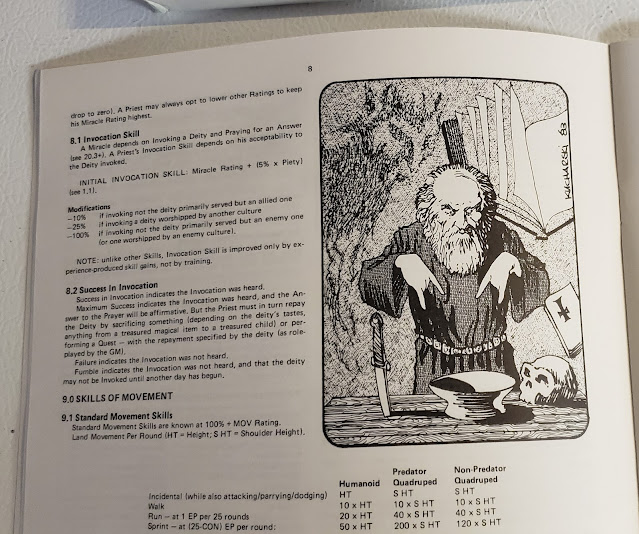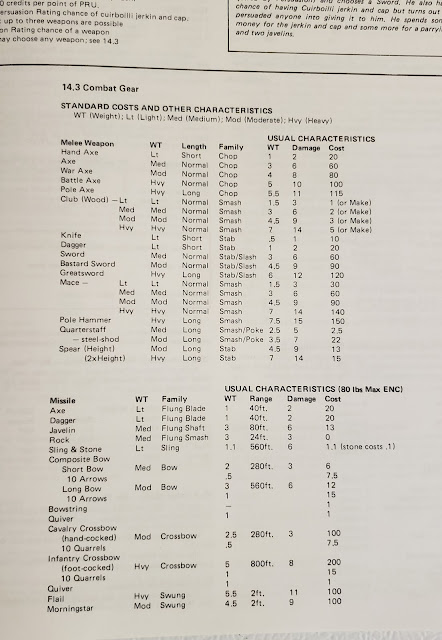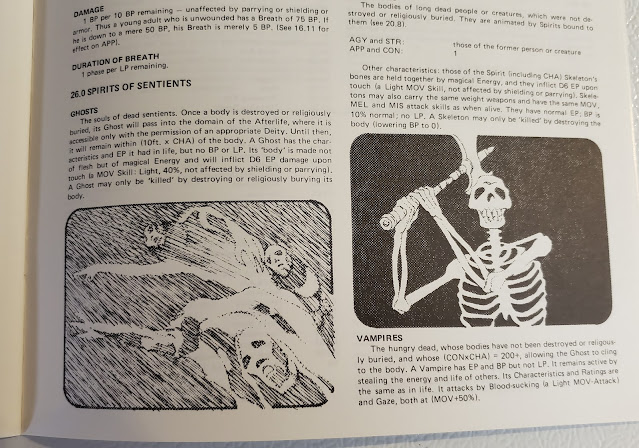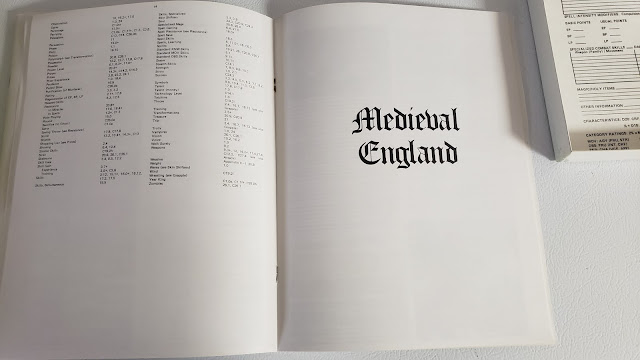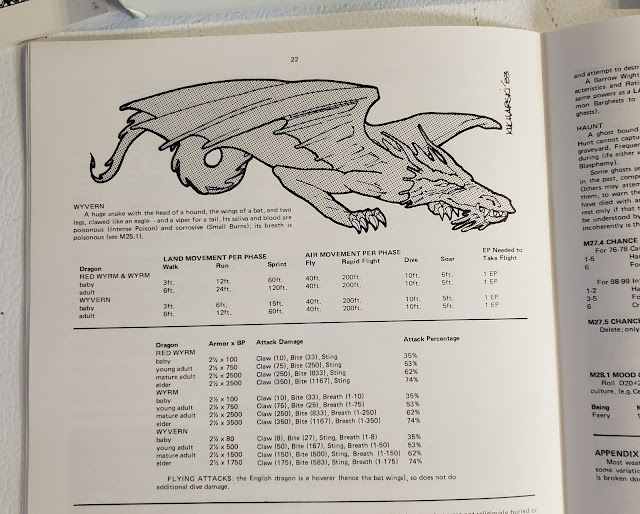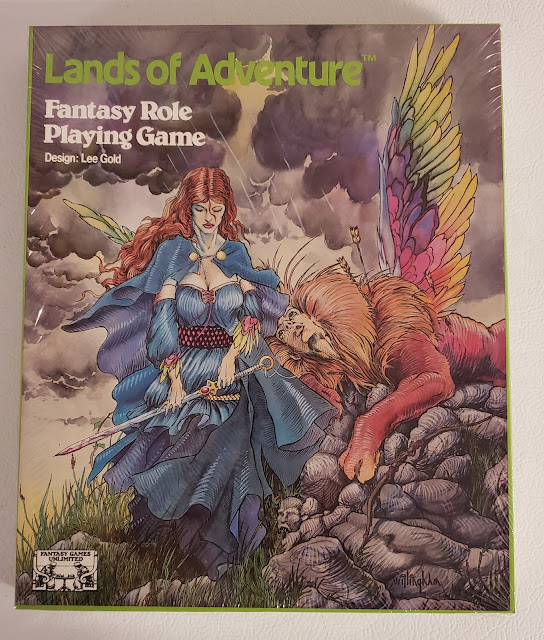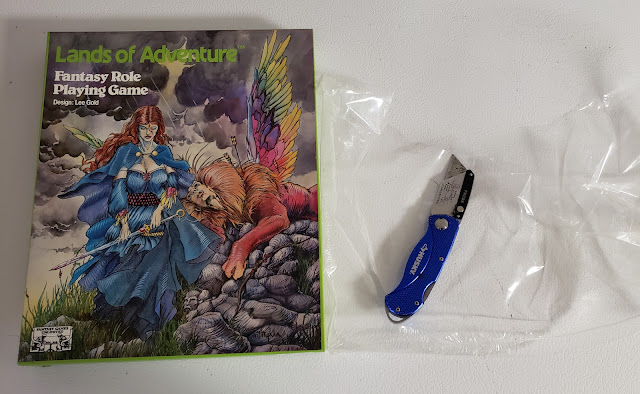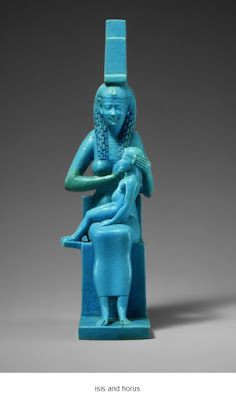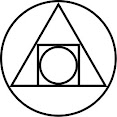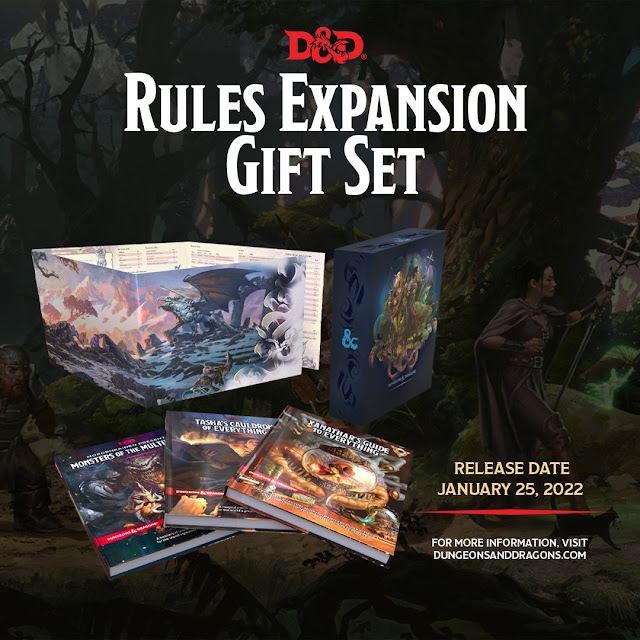
It is the Modern Age. Three hundred years ago, at the beginning of the Age of the Havoc, Joskales, the last Incarnate of the Astarite died and the few remaining of that race fled their dead cities. Two-hundred-and-three years ago, a colony ship arrived from Earth lost
en route to Alpha Centauri, and founded four colonies. The colonists discovered a world already settled by several species, each of them also colonists who had come to the world in the centuries long past. They include the almost plant-like hermaphrodite Ælfyn; the four-armed, reptilian and mercantile Agamids, who command a fleet of sky-junks; the short, stocky, almost egg-shaped Dakti, know for their technological acumen and their Karkan, specialised exo-skeletons they use for exploration; and Orcs, nomadic hunters and warriors who distrust technology. They also discovered the world was infused with ethereal energy which the Astarites had harnessed both psychically and technologically, constructing a network of stelae known as the Chain which enhanced their abilities and created a planetary communications system. However, their attempts to restart would lead to an Æthero-magnetic storm which would disrupt all technology and lead to increased friction between numerous nations that would escalate into a series of violent wars in the Age of Conflicts.
Thirty years ago, H.E.R.O. (Heuristical Exploration and Reconnaissance Operations), now known as the Free-Lancers’ Guild, was founded during the First Crater Council. It was established to undertake independent operations free of politic influence, to conduct expeditions to the ancient Astarite cities, and once there recover the surviving items and blueprints of Arcanotechnology that have survived, and also to research the Alteration, a strange, gangrenous fungus which was found to be spreading from the ruins. In the years since, the Free-Lancers’ Guild, operating out of Patera, the Crater City, has continued to undertake the same missions, but also provides guards, exterminate monsters, mediates conflicts between communities, and also acts against dragons. These creatures fall as seeds from the stars and when they hatch and grow, they can devastate whole communities. In return, members, known as Freelancers, receive lodging, support, training, and more.
This is the set-up for
Lore & Legacy: Fantastic Adventures in a World of Science and Magic, a French science-fantasy role-playing game published by
Empyreal Media Productions. It takes place on the fantastical world of Empyrea, a vast planet home to numerous species who have come from the stars and settled. In the long years since, they have forgotten their homeworlds, how they got to Empyrea, and how to operate much of the technology. Indeed that technology has come to be regarded as akin to magic and only a few have the skill to use what has become known as Arcanotechnology. Empyrea is also a world of many ruins, especially of the grandiose and sinister necropolis left behind by the mysterious Astarite civilization that came before anyone settled on the planet. They are said to contain lost treasures and forgotten technological wonders, but also many dangers—antediluvian biomechanical guardians and creatures corrupted by the poison of the Alteration, a mysterious fungal gangrene that spreads over the regions that once formed the heart of the Astarite kingdoms. In recent years, the Alteration has begun to spread again and Dragon Seeds have fallen from the sky, giving birth to Dragons, creatures of unrivalled destructive power. Where such threats occur, the Free-Lancers’ Guild steps forward to protect and investigate. Found throughout many nations, its members coming from many different species, the Free-Lancers’ Guild sends out those determined to unravel the mysteries of the past and to venture beyond the borders imposed by incomplete maps, to protect the population, lift the veil on ancient lore, and reclaim their lost legacies.
A character in
Lore & Legacy is defined by his People (or species), seven Attributes representing his physical and mental prowess, various Abilities in which has either been trained or is gifted, and a number of Traits representing his personality quirks, special talents, obsessions, phobias, and the like. The Peoples of Empyrea—at least on the northern half of the continent of Enelysion, especially in and around the Great Crater and its neutral city of Patera, are the Ælfyns, Agamids, Dakti, Humans, and Orcs. In more recent times, they have been joined by the Disincarnated, sentient androids who once served the Astarite who have awoken devoid of personality and knowledge, but quickly grow to acquire both, as well as the traits of the other Peoples of Empyrea. The Attributes are Acumen, Fortune, Mastery, Presence, Robustness, Temper, and Vigour, and all bar Fortune are represented by a single six-sided die plus a modifier. Fortune is a straight value representing the number of Fortune dice which a player can roll each day. Now not all of the remaining six Attributes are not exactly clear as to what they are from their names. So, Acumen is the character’s ability to observe, reflect, and analyse; Mastery is agility, dexterity, and precision, and ability to think and react quickly; Temper is his willpower; and Vigour his raw physical strength. This runs counter to most naming conventions for attributes and may well be confusing for some players.
Abilities include Arcanotech, Charge, Investigation, Melee Combat, Passion (Painting), Wizardry, and more. They are always represented by a single ten-sided die plus a modifier. Traits tend to apply situational modifiers. For example, ‘Beast of Burden’ increases a Player Character’s Luggage Points by three; Healer which grants a Fortune die any non-magical healing action; Agoraphobic, which levies an Adversity die on all actions when the Player Character is in an open space; Ancestral Weapon, which grants the Player Character a weapon with the Ætheric, which reduces the Magic Resistance of a successfully struck opponent; and Remarkable, which marks the Player Character out in social interactions with members of other races, levying an Adversity die and adding a Fortune die. A Player Character also has a number of derived secondary characteristics, including Health Points, Magic Points, Physical, Magic and Mental Resistances, and so on.
To create a character, a player selects a race, which provides the base attributes and traits. He has six points to assign to his character’s attributes, eight to spend on traits and ten to spend on abilities. One of the latter points must be spent on a passion or a hobby. Lastly, a character receives some money and equipment, and if he has studied magic some spells. In general, characters tend to be fairly focused and specialised, backed up with more general skills.
Our sample character is Zuwena whose fascination with Arcanotech has never extended beyond the library. She has joined the Freelancers’ Guild in the hopes of joining an expedition, if not actually leading one. In the meantime, she has to undertake other tasks for the guild, perhaps to prove herself worthy, perhaps to gain a bit more experience of the world outside of her books.
Zuwena
Human
Temper 2 Acumen 4 Mastery 4 Presence 2
Robustness 1 Vigour 1 Fortune 2
Racial Traits: Noticeable, Technophile
Traits: Bookworm, Little Genius
Abilities: Archaeology 2, Investigation 2, Observation 1, Dodge 1, Melee Combat 1, Mysticism 1, Wilderness Survival 1, Wizardry 2
Passion Ability: Arcanotech 1
Wizardry Spells:
Ætheric Echolocation (6),
Ætheric Arrow (3), Healing (3)
Luggage: 9
Weight: 30
Health Points: 4
Magic Points: 8
Physical Resistance: 3
Mental Resistance: 16
Last Chance Pool: 3
Injury Threshold: 2
Speed: 5
Mechanically,
Lore & Legacy uses the ‘3d’ engine, which uses three sizes of the dice and three types of dice. The three sizes are ten-sided or Ability dice, eight-sided or Damage dice, and six-sided or Attribute dice, and they are always used in specific situations. In general, when an Ability or Attribute is tested, or Damage is rolled, only one die, the Basic die is rolled, any modifier being added to the result to get a total. However, it can be as many as three. It cannot, though, be more than three. The extra dice can either be a Fortune die, an Adversity die, or even both! The result of the Fortune die is added to the result of the Basic die, whilst the result of the Adversity die is subtracted from the result of the Basic die. Adding both a Fortune die and an Adversity die to the dice to be rolled does not mean that they cancel each other out. Instead, their results are added and subtracted respectively.
When a Player Character undertakes an action, his player makes an Action Roll, consisting of the appropriate Basic die—whether a ten-sided die because the Player Character has an appropriate Ability or a six-sided die because he does not and must rely upon an Attribute instead—and applies any modifier. The Difficulty Rating for the Action Roll ranges from six for ‘simple’ to eighteen for ‘superhuman’. The success result can vary. A result equal to, or greater than the Difficulty Rating is a Standard Success and indicates that the Player Character has achieved his intended aim. A result one-and-a-half times or greater than the Difficulty Rating is a Major Success, and indicates that the Player Character has achieved his intended aim with positive benefits. A result less than the Difficulty Rating and less than half of the Difficulty Rating is a Partial Success, and indicates that the Player Character has achieved his intended aim, but with unforeseen complications. A result less than the Difficulty Rating and more than half of the Difficulty Rating is a Failure, and indicates that the Player Character has not achieved his intended aim.
In addition, a Player Character can also roll a Spectacular Success or Disastrous Failure. A Spectacular Success is achieved when a Fortune die is included in the Action Roll and a maximum result is rolled on the Fortune die, when the result of the Action Roll is a Standard or Major Success. Similarly, a Disastrous Failure is achieved when an Adversity die is included in the Action Roll and a maximum result is rolled on the Adversity die, when the result of the Action Roll is a Partial Success or Failure. Although a Disastrous Failure cannot result in the death of a Player Character, the Game Master is free to be as creative as she wants, whether the result is a Spectacular Success or a Disastrous Failure.
For example, Zuwenna has been assigned an escort mission, and whilst she is not interested in the job itself, the route does take it near some ruins that are rumoured to be Astartite. Before she attempts to persuade her colleagues that they might be interesting, she decides to spend some time in the archives conducting research. She has the Investigation skill, so her player will be rolling a ten-sided die and adding Zuwenna’s Investigation of 2. In addition, the Little Genius Trait grants her a Fortune die with any Ability which uses the Acumen Attribute. However, she does not have long, so there is a time penalty to find any useful information. The Game Master sets the Difficulty Rating at twelve. Zuwenna’s player rolls the two ten-sided dice and rolls a six on the basic die and a maximum of ten on the Fortune die! Not only is the result a total of eighteen, but the ten on the Fortune die means it is a spectacular success! This means that she definitely has some information related to the ruins and it could contain arcanotech. That should be enough to persuade her companions on the road.Both combat and magic use the same mechanics. A combatant has a single gesture, move, and action each round, and if he attacks, his player’s Action Roll is against his opponent’s Physical Resistance as the Difficulty Rating or Magic Resistance if the weapon used involves arcanotech. A Fortune die can be added to an Action roll if the opponent is immobilised, paralysed, knocked down, unconscious, and so on, likewise an Adversity die can be added if the attacker is suffering from similar conditions. Damage is rolled on a single eight-sided die, plus the weapon’s damage bonus, and is halved if the outcome of the Action Roll is a Partial Success, but increased by a half if a Major Success. Damage inflicted equal or superior to an opponent’s Injury Threshold and an injury is inflicted.
Lore & Legacy includes several types of magic. Illusory magic deals with changing the perceptions of others about their environment, whilst Material magic being the scientific study of making real what was not, or transforming what is. Ritual magic consists of magic which takes several magicians to cast, whilst Spiritism deals with ‘nature spirits’, including possession and exorcism. Bar Spiritism, the other types of magic include lengthy lists of spells, which are all in their own way interesting and ones that a magic using character in the game would want to cast. As in combat, the outcome of a Partial or Superior Success on an Action Roll halves the effect of the spell, or increases it by half, respectively.
For example, Zuwenna has persuaded her colleagues to investigate the ruins in the hope of finding some Arcanotech or at least something interesting. She has already cast
Ætheric Echolocation to determine the extent of the underground passages and rooms when the guards left behind to protect the caravan come looking for them. Not to check on their welfare though, but to steal what Zuwenna and her colleagues have found. However, their disappointment at the lack of discoveries leads them to threaten Zuwenna and her colleagues, and a fight breaks out. Zuweena is attacked by one of the guards, Hagor. Both Zuwenna and Hagor have a Speed of five, but he is wearing chainmail, which reduces it by one to four. However, surprised by the attack, Zuwenna decides to fully defend herself. This doubles her Physical Resistance from three to six, to which is added her Dodge skill of one and the bonus from her padded armour, for a total Physical Resistance of eight. The Game Master rolls a Basic die and adds Hagor’s Melee Combat skill of 3 to the total. She rolls a two and adds the three for a total of five. This is a Partial Success, which means that any damage inflicted by Hagor is halved. The Game Master rolls 1d6+1 for his shortsword, rolling a one, then adding one before halving the damage inflicted—one! Clearly Hagor was expecting to be more of a pushover, as he growls, “C’mere you little witch!”, but Zuwenna’s Health Points are reduced from four to three.
Now Zuweena can act. She has a dagger, but attempts a desperate blast of magic by unleashing an
Ætheric Arrow at Hagor. Having already cast
Ætheric Echolocation, Zuwenna has two Magic Points left, but
Ætheric Arrow costs three to cast. This means that the power must come from somewhere and that is from her Health Points, which will be reduced by a further single point, leaving her with two. To cast the spell, Zuwenna’s player will be rolling a ten-sided die and adding Zuwenna’s Wizardry of 2. As before, the Little Genius Trait grants her a Fortune die with any Ability which uses the Acumen Attribute, which includes the Wizardry Ability. The Difficulty Rating is determined by Hagor’s Mental Resistance, which is fourteen. Zuwenna’s player rolls eight on both dice for a total of sixteen and adding her Wizardry gives a final result of eighteen. This is a Standard Success and inflicts 1d8+1 damage. Zuwenna’s player rolls a total of eight, enough to beat Hagor’s Injury Threshold of eight. This can trigger a Condition, which will vary depending upon where the Ætheric Arrow. Zuwenna’s player rolls ten on a ten-sided die, indicating the head. Hagor screams as his head is burned by Ætheric energy. Until healed, the Game Master must roll all of his actions with an Adversity die.The advancement mechanics in
Lore & Legacy are nicely woven into the setting itself. Being a member of the the Free-Lancers’ Guild provides a Player Character with motivation and missions to undertake, but having completed a mission, the Freelancers are paid in Asters which can be used to gain training, access Arcanotech archives and magical libraries, and even undergo experimental therapy to effectively buy off the negative effectives of Traits. For example, Bookworm provides extra points to spend on Abilities during character creation, but at the cost of an Adversity die being rolled every time a character undertakes an action related to his Vigour. So a player could spend the Asters to pay off this negative effect, all of which provides a nice range of options when it comes to Player Character advancement.
Although
Lore & Legacy employs magic and wizardry, it is very much a Science Fiction game and this shows in the range of equipment available. So not just swords and shields, but firearms, technologically enhanced weapons such as gravitic bolas or phase kukri, and Arcanotech. The latter are lost devices from all of the peoples on Empyrea whose manufacture is no longer possible, and they need to be found and deciphered. They can be weapons such as Adamantine Claws and Disphasers which paralyses targets, and artefacts such as Anti-Grav Boots, Assessor collars which estimate the value of items, Khading Wings carried in a backpack and allow wearer’s to fly. Vehicles exist also, such as the Agamid aerial junks, gunboats that have survived wars, but are fielded during emergencies, such as dragon attacks. Full stats for dragons are provided in the bestiary along with a host of other threats and dangers.
Lore & Legacy includes a decent amount of background about the Free-Lancers’ Guild, what it does and what the Player Characters do. Patera, the Crater City, is also detailed as is the Greater Crater Region, along with various NPCs which can be found throughout the region. There is plenty here to support an ongoing campaign, and both the Game Master and her players are provided with a starting point. For the latter, it is set of six pre-generated characters, but for the former, it is not one, but three adventures. They begin with an investigative adventure in Patera itself following an attack on the Free-Lancers’ Guild headquarters, whilst the second is more traditional, being an expedition to investigate a meteor strike which at worst could be the arrival of another Dragon Seed. Lastly, the third scenario follows on from the second, to further investigate what was found at the site of the meteor strike. Together the three scenarios nicely showcase aspects of the setting—the Player Characters’ base of operations, what expeditions are like, and a little bit of some of the mysteries of the Empyrea. In addition, suggestions are given as to how to include the ‘Froglins in the Mist’ adventure from
Lore & Legacy – Quick-Start Guide in between the three adventures in the core book. Each of the three should provide at least two sessions’ worth of play, if not more.
Physically,
Lore & Legacy is well presented. Much of the artwork is excellent and much of it reminiscent of FASA’s
Earthdawn roleplaying game—which should be no surprise given that artist Jeff Laubenstein worked on both. The writing is also good, and the translation is more than reasonable. It feels a little overwritten in places, the rules, though simple, often feel as if they have more terms than they really need. If the book lacks anything, it is an index. The table of contents is good, but an index would have helped.
Lore & Legacy: Fantastic Adventures in a World of Science and Magic could be described as
Earthdawn meets
SkyRealms of Jorune, but the former is primarily due to Jeff Laubenstein’s artwork. Nevertheless, it firmly falls into the ‘Sword & Planet’ genre, combined with post-apocalyptic elements, whilst adhering to Clarke’s Third Law which states that, “Any sufficiently advanced technology is indistinguishable from magic.” Its inspirations—the French science fantasy comics series,
Valérian, the works of Moebius, Philippe Caza, and Philippe Druillet in
Heavy Metal, C.L. Moore’s
Northwest Smith and
Jirel of Joiry, the computer game,
Might & Magic, and even
She-Ra and the Princess of Power—all combine to give
Lore & Legacy a different feel, a stronger sense of the other and the alien than might be found in similar roleplaying games.
Lore & Legacy is an adroit combination of a simple rules system, intriguing setting, a set-up that provides the Player Characters with motivations and missions, and a sense of mystery and wonder in the secrets of the Astarites. Although it leaves both wanting to know more about the world of Empyrea and its mysteries,
Lore & Legacy: Fantastic Adventures in a World of Science and Magic provides Game Master and players alike with an impressive introduction and start.
 It is that time of year again! Lots of great horror bundles coming out and I am happy to be part of the first for October 2021.
It is that time of year again! Lots of great horror bundles coming out and I am happy to be part of the first for October 2021. 










